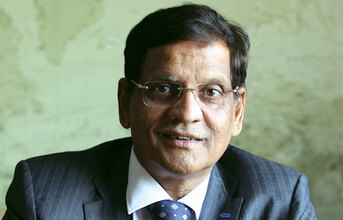
In September this year, we will celebrate the 10th anniversary of Make in India, the flagship scheme launched by the Honourable Prime Minister Shri Narendra Modi in 2014, to promote and incentivise dedicated investments in the country's indigenous manufacturing sector. Over the course of the past decade, Indian manufacturing has grown from strength to strength, bolstered by robust infrastructure, unwavering policy support, and heightened investor confidence. The outlook for the sector is indeed promising, with a report by Colliers' predicting that India's manufacturing market will grow to USD 1 trillion by 2025-26.
Electronics is one of the key highlights of this unfolding Indian manufacturing success story, witnessing a surge in investment and growth. An estimate by the Indian Cellular and Electronics Association (ICEA) suggests that the electronics manufacturing sector will grow to USD 115 billion, with the contribution of mobile phone manufacturing alone is expected to be USD 50 billion. An increased emphasis on achieving self-reliance in semiconductor chip production further exemplifies this visionary and dynamic epoch of Indian manufacturing.
Decoding the success of electronics manufacturing in the Make in India era
Foreign Direct Investment (FDI) has played a significant role in the phenomenal growth of Indian manufacturing over the past decade. FDI inflows over the past nine financial years (2014-23) have increased by 100 per cent over those of the previous nine financial years (2005-14), a strong testament to global confidence in the country's manufacturing sector and the Indian government's success in creating a favourable climate for foreign investment. This is further borne out by major international FMEG brands establishing production facilities in India. At a time of global headwinds, India's geopolitical and economic stability, as well as its strategic location—offering ease of access to the Asian, European, and African markets via air and sea links—further add to the country's attractiveness as an investment destination.
The role of policy measures in creating a conducive environment for electronics manufacturing can scarcely be understated. The establishment of dedicated industrial parks and Special Economic Zones (SEZ) with a primary focus on electronics manufacturing, a product of government-industry collaboration, has been a most welcome step. A significant initiative in this regard has been the setting up of Electronics Manufacturing Clusters (EMCs) across various states to serve as manufacturing hubs for the electronics sector.
Production Linked Incentives (PLIs) have proved to be another highly effective measure to promote indigenous manufacturing of electrical components. The PLI scheme has been successful in attracting substantial investments for large-scale electronics manufacturing, encompassing mobile phone manufacturing and the production of specified electronic components, including Assembly, Testing, Marketing and Packaging (ATMP) units. Furthermore, PLI has considerably elevated its domestic capabilities in terms of chip design and assembly.
India's thriving IT sector is also a significant asset from the perspective of the electronics sector. An abundance of highly skilled and capable talent, including engineers, technicians, and software developers, ensures that the IT sector is well-equipped to develop and support the innovative technologies and processes required for the continued evolution of electronics manufacturing. Beyond IT, access to a skilled labour force at lower costs has played a crucial role in attracting global manufacturers to the country.
Last but not least, robust domestic demand has been a critical factor driving the upward trajectory of Indian electronics manufacturing. The country's vast population, escalating urbanisation, and augmented purchasing power underpin this massive and rapidly growing domestic market for a wide array of electronics products, - incentivising even global FMEG brands to manufacture in India in order to tap into this burgeoning demand.
The road towards 2047 and Amrit Kaal
We are a little over two decades away from celebrating the centenary of Indian independence in 2047. During this period, described as Amrit Kaal, the government, industry, and ordinary citizens shall collectively endeavour to realise our shared vision of a prosperous, developed India. The electronics manufacturing sector certainly has a momentous role to play in the pursuit of this national objective. The path ahead is not without its challenges. However, challenges bring forth opportunities that, if leveraged effectively, will pave the way for India to be cemented as a global manufacturing hub.
global manufacturing hub. Addressing skill gaps will be one of the key priorities for the sector in the years ahead. India's ‘demographic dividend' can only be realised if the talent pool's skill sets are aligned with industry requirements. The rapidly evolving technological landscape, including the growing prevalence of artificial intelligence, machine learning, the Internet of Things (IoT), 3D printing, and other advanced technologies, will only make addressing skills-related challenges more pertinent. Collaborations between the public and private sectors, as well as academia, will go a long way towards ensuring that the workforce is adequately equipped with the requisite skills.
Reliance on global supply chains for imports of raw materials and critical components remains another challenge to be addressed. Increased self-reliance will not only serve to insulate the country from disruptions, such as those experienced during the pandemic, but will also further enhance India's appeal as a manufacturing destination for global brands as they seek to diversify their own supply chains.
Additional streamlining of the regulatory framework and improved access to finance and incentives, particularly for small and medium enterprises (SMEs), will act as further impetus to growth in the electronics manufacturing sector. Moreover, increased investment in R&D will elevate India's competitiveness in highvalue product segments.
Manufacturing, which currently contributes to 17 per cent of the nation's GDP, has a pivotal role to play in India's march towards becoming the world's third-largest economy. Sustained policy support, a large skilled workforce, robust domestic demand, and geopolitical stability bode well for the country's ambitions to become a global manufacturing hub. Building on the successes and learning from the challenges of the past decade, the Indian manufacturing sector, including electronics manufacturers, is well-placed to deliver transformational growth in the decade ahead and beyond.


























